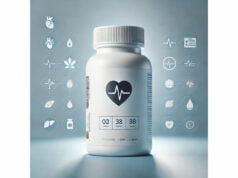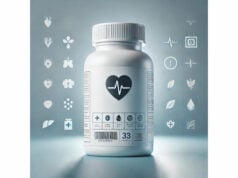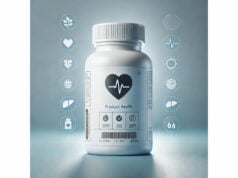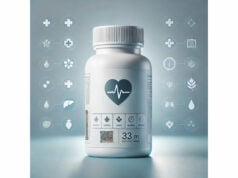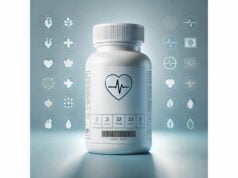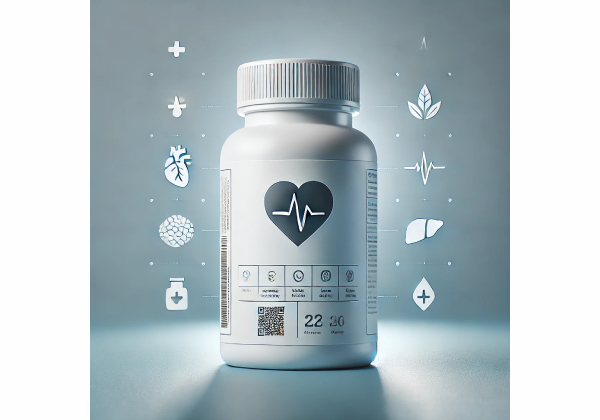
Kristalose is a prescription version of lactulose, a synthetic sugar used most often as an osmotic laxative for chronic constipation and as a cornerstone therapy to help prevent and treat episodes of hepatic encephalopathy (HE) in people with advanced liver disease. Supplied as convenient 10 g and 20 g single-dose powder packets, it dissolves in water, juice, or milk to create a mildly sweet solution. In the colon, Kristalose is fermented by gut bacteria into organic acids. Those acids pull water into the bowel to soften stool and also trap ammonia as ammonium, which can help protect the brain in HE. Compared with stimulant laxatives, Kristalose is gentle, non-habit forming when used as directed, and adjustable to the stool consistency you want. This guide explains how Kristalose works, who it suits, how to mix and titrate it, what doses clinicians commonly use for different goals, and how to avoid pitfalls like dehydration or electrolyte imbalance. You will also find a sober review of side effects, drug interactions, and evidence.
Fast Facts
- Improves chronic constipation by drawing water into the colon and softening stool.
- Reduces blood ammonia in hepatic encephalopathy by acidifying the colon and trapping ammonium.
- Typical adult constipation dose: 10–20 g once daily; adjust up to 40 g/day as needed.
- Main cautions: diarrhea with dehydration and electrolyte shifts if overdosed; avoid with galactosemia or bowel obstruction.
- Not for everyone: people with galactosemia, suspected GI obstruction, or severe dehydration should avoid unless a clinician directs otherwise.
Table of Contents
- What Kristalose is and how it works
- Who should consider Kristalose
- How to take Kristalose correctly
- Dosing by goal: constipation vs hepatic encephalopathy
- Mistakes, interactions, and troubleshooting
- Safety, side effects, and who should avoid
What Kristalose is and how it works
Kristalose is lactulose in a powder-for-solution packet designed for oral use. Lactulose is a synthetic disaccharide composed of galactose and fructose. Human small intestines do not have the enzymes to digest it, so it reaches the colon intact. There, resident bacteria ferment lactulose into short-chain organic acids (primarily lactic and acetic). These acids do two clinically useful things:
- Osmotic hydration of stool. The acids increase the osmotic load in the colon. Water follows the gradient into the lumen, softening stool and increasing volume. That bulk gently stimulates peristalsis and improves stool frequency. Unlike stimulant laxatives that act on the enteric nervous system to trigger contractions, Kristalose works by water movement and stool softening, which many patients find gentler and more sustainable for regular use.
- Ammonia trapping in hepatic encephalopathy. In liver disease, gut-derived ammonia contributes to neurotoxicity. When colonic pH falls, ammonia (NH₃) becomes ammonium (NH₄⁺), which is ionized and less absorbable. Faster transit further reduces time for ammonia generation and uptake. The combined acidification and catharsis help lower systemic ammonia levels and reduce HE symptoms.
Additional practical features of Kristalose include unit-dose convenience (10 g or 20 g packets) and taste flexibility—it can be mixed with water, milk, juice, or soft foods like yogurt. Packets avoid the sticky viscosity of bottled lactulose solutions, improving portability and dose accuracy.
Onset of effect differs by indication. For constipation, expect a bowel movement within 24–48 hours after starting. For HE management, clinicians often use more frequent dosing initially, and effects on mental status can appear within hours as bowel movements become regular and stools soften to the targeted consistency.
Finally, Kristalose also behaves as a prebiotic—by feeding saccharolytic bacteria—though this is a secondary consideration compared with its primary clinical goals. That prebiotic activity may help maintain its laxative effect over time without escalating to very high doses in many users.
Who should consider Kristalose
Kristalose is considered in two main settings:
- Chronic constipation (adults and children): People who have hard, infrequent stools, straining, or a sense of incomplete evacuation despite lifestyle measures (adequate fiber, fluid, and activity) often benefit from an osmotic laxative. Kristalose is a reasonable first-line or second-line option when polyethylene glycol (PEG) is not tolerated, unavailable, or when a clinician prefers lactulose for its long safety record and adjustable packets.
- Hepatic encephalopathy (HE): Adults with cirrhosis who have had prior HE episodes—or are exhibiting early signs such as sleep-wake reversal, confusion, or slowed thinking—are commonly maintained on lactulose as baseline therapy to reduce recurrence. In overt episodes, more aggressive titration is used to achieve two to three soft stools daily.
People for whom Kristalose often fits well
- Those needing a gentler, titratable laxative that can be adjusted by half packets or packet counts day to day.
- Patients who dislike the taste or viscosity of liquid lactulose; Kristalose mixes thinner and can be flavored by the chosen beverage.
- Travelers who need portable dosing without carrying a bulky bottle.
- Caregivers managing HE who need a clear stool-based target for dosing (e.g., “two to three soft stools daily”).
When to consider alternatives first
- Acute fecal impaction or need for rapid relief may require rectal therapies or different oral agents under clinician guidance.
- Severe bloating-predominant IBS that worsens with fermentable carbohydrates (FODMAPs) may tolerate PEG better than lactulose.
- Electrolyte-sensitive patients (e.g., on diuretics for heart failure or ascites): Kristalose can be used, but requires careful titration and monitoring to avoid dehydration and sodium or potassium disturbances.
Special populations
- Pediatrics: Kristalose can be used under supervision. Dosing is weight-based, and the goal remains soft, painless stools without diarrhea.
- Pregnancy and lactation: Lactulose has long clinical experience; it is minimally absorbed, and many clinicians consider it acceptable during pregnancy and breastfeeding when needed. As always, decisions should be individualized.
- Diabetes: Each packet contains small amounts of free monosaccharides; most patients can still use it safely, but very tight carbohydrate management warrants discussion of dose timing and monitoring.
If you are unsure whether Kristalose fits your situation—especially if you have liver disease, kidney disease, or are on multiple medications—ask a clinician to personalize the plan. The safest use starts with a clear goal and a practical strategy to reach it.
How to take Kristalose correctly
Before you start: Decide on your therapeutic goal and a simple titration plan. For constipation, the goal is one comfortable bowel movement most days without urgency or cramping. For hepatic encephalopathy, the goal is two to three soft stools daily with minimal diarrhea.
Mixing and administration
- Empty one 10 g or 20 g packet into a glass.
- Add 4 ounces (120 mL) of water, milk, or juice; stir until dissolved. If preferred, sprinkle onto soft food (e.g., yogurt) and mix well.
- Drink the full mixture. Rinse the glass with a little liquid and drink that to ensure the full dose.
- You may divide the daily amount (e.g., 10 g twice daily instead of 20 g once daily) to reduce gas or cramping.
Timing tips
- Take at the same time daily for constipation—breakfast or evening works well. Some prefer bedtime to allow overnight colonic fermentation and a morning bowel movement.
- For HE, follow your clinician’s instructions. Doses are often every 4–6 hours initially, then reduced and spaced out after the target stool pattern is achieved.
Titration approach (constipation)
- Start with 10–20 g once daily.
- If no softening by day 2, increase by 5–10 g/day (e.g., add half a packet or a second packet).
- Cap the total at 40 g/day unless your prescriber has advised otherwise.
- Once you achieve comfortable, formed-soft stools, hold that dose. If stools become loose, reduce by 5–10 g.
Hydration and diet
- Drink extra non-caffeinated fluids (two extra glasses is a reasonable baseline) to support the osmotic action.
- Pair Kristalose with fiber from food (vegetables, fruits, whole grains) unless fiber worsens bloating. If using fiber supplements, increase slowly and separate timing by an hour to gauge effects.
Storage and handling
- Keep packets at room temperature, away from moisture and heat.
- Use each packet immediately after opening. Do not store pre-mixed solutions for extended periods unless your pharmacist has provided specific guidance.
What to expect
- Mild gas and bloating can occur in the first days as colonic bacteria adapt. This usually settles with steady dosing or by splitting the daily amount.
- Onset: 24–48 hours for constipation; faster for HE with more frequent dosing.
- If nothing happens after three days at 20–30 g/day, reassess technique, fluid intake, and whether another cause of constipation needs attention.
Dosing by goal: constipation vs hepatic encephalopathy
Adult chronic constipation (typical, begin here unless told otherwise)
- Start 10–20 g once daily.
- Adjust every 1–2 days by 5–10 g to achieve one comfortable bowel movement most days.
- Usual effective range: 10–30 g/day; do not exceed 40 g/day without medical supervision.
Pediatric constipation (under clinician guidance)
- Common weight-based range: 0.7–2 g/kg/day divided once or twice daily (typical maximum 40 g/day).
- Titrate to soft, painless stools. If diarrhea occurs, reduce the total daily amount.
Hepatic encephalopathy: prevention and treatment
- Acute episode (under medical supervision): Dosing is often more frequent (e.g., every 1–2 hours initially) until the first bowel movement, then adjusted to achieve two to three soft stools per day. Packet totals vary; the principle is to dose to effect rather than chase a fixed gram number.
- Secondary prophylaxis (maintenance): Split doses (e.g., 15–20 g two to three times daily) to maintain the target stool pattern. Your care team may add rifaximin for recurrent episodes; Kristalose remains the backbone.
Renal or hepatic impairment
- No standard renal dose adjustment is required because lactulose acts locally in the colon and is minimally absorbed. In advanced liver disease, Kristalose is routinely used; monitoring focuses on hydration, electrolytes, and stool frequency, not serum drug levels.
Older adults
- Start at the low end (10 g daily) and advance slowly to reduce bloating and diarrhea risk. Watch for falls risk if urgent stools develop—plan bathroom access.
When to call your clinician about doses
- No bowel movement after three days at 30–40 g/day for constipation.
- Severe diarrhea (six or more watery stools/day), lightheadedness, or signs of dehydration.
- Worsening confusion or lethargy despite regular stools in HE—more than ammonia alone could be at play.
Key point: With Kristalose, the dose is what produces the right stool. Numbers guide you, but clinical targets—comfort for constipation and two to three soft stools daily for HE—determine success.
Mistakes, interactions, and troubleshooting
Common mistakes
- Taking too little for too short a time. Patients sometimes try 10 g once, feel no change the next morning, and stop. Give it 48 hours, then titrate.
- Skipping hydration. Osmotic laxatives work best when you are not volume-depleted. Aim for adequate daily fluid, especially during hot weather or if you take diuretics.
- Chasing a number, not a stool target. For HE, the target is two to three soft stools daily. For constipation, aim for regularity without urgency. Adjust the dose accordingly.
- Doubling up before bed. A large bedtime jump can cause nocturnal urgency. Spread increases into morning and late afternoon instead.
What if bloating or gas is bothersome?
- Split the dose (e.g., 10 g morning + 10 g evening).
- Reduce by 5 g for a day or two, then increase gradually.
- Consider a short walk after dosing and avoid large gas-producing meals immediately before.
What if diarrhea develops?
- Reduce the total daily amount by 5–10 g or skip one dose.
- Rehydrate with oral fluids. If you feel dizzy, weak, or lightheaded—or if diarrhea is severe—seek medical advice.
Drug and disease interactions to know
- Broad-spectrum antibiotics may reduce lactulose’s effect in HE by altering colonic flora; if you must take antibiotics, your clinician may adjust your Kristalose plan temporarily.
- Antacids in large amounts can blunt colonic acidification; this is rarely clinically significant at common doses but is worth noting in refractory HE.
- Other laxatives: Stimulants (e.g., senna, bisacodyl) can be layered short-term for acute rescue, but long-term plans typically use one foundation agent plus lifestyle changes to minimize swings between constipation and diarrhea.
- Diabetes: Kristalose contains small amounts of free sugars; monitor if your carbohydrate budget is very tight. For most, the glycemic impact is minimal.
- Low-galactose diets/galactosemia: Avoid; Kristalose contains galactose.
When PEG or other options may be better
- Patients with FODMAP-sensitive IBS who worsen with fermentable carbohydrates may tolerate PEG more comfortably.
- If you need rapid, same-day relief, discuss stimulant or suppository options used briefly and safely in a broader plan.
Adherence aids
- Keep packets in your bag for travel. Set a phone reminder for consistent timing. Track changes in a simple stool diary for a week when starting or adjusting.
Troubleshooting is easier when you anchor to the clinical targets, not just the gram amount. If you are hitting the target stools but still uncomfortable, your plan needs refinement. If you are not hitting the target stools, your dose or schedule likely needs adjustment.
Safety, side effects, and who should avoid
Common side effects (usually dose-related and transient)
- Gas and bloating during the first few days.
- Abdominal cramping if you escalate too quickly.
- Loose stools or diarrhea when the dose overshoots the target.
- Mild nausea if taken on an empty stomach (try with food).
Less common but important
- Dehydration and electrolyte imbalances (e.g., low potassium, high sodium) can occur with sustained diarrhea, especially in older adults, people on diuretics, or those with heart or kidney conditions. Warning signs include lightheadedness, palpitations, leg cramps, or confusion.
- Hypernatremia in cirrhosis is a specific risk when watery stools are excessive while intake is insufficient; your care team may monitor weights and labs.
- Aspiration risk if mental status is impaired; in HE, dosing strategies should account for a patient’s alertness and swallowing ability.
Who should not use Kristalose unless a clinician specifically directs it
- Galactosemia or strict low-galactose diet.
- Suspected bowel obstruction or ileus (severe abdominal pain, persistent vomiting, no gas or stool).
- Severe dehydration at baseline.
- Hypersensitivity to lactulose or packet components.
Pregnancy and breastfeeding
- Lactulose has minimal systemic absorption and long clinical use. Many clinicians consider it acceptable in pregnancy and lactation when benefits outweigh risks. As with any medication used during pregnancy, decisions should be individualized and overseen by a healthcare professional.
Pediatrics
- Safe and commonly used under pediatric guidance with careful weight-based dosing and clear stool targets. Caregivers should be taught to reduce the dose if stools become watery.
Long-term safety
- Kristalose is non-habit forming in the traditional sense; it does not damage enteric nerves. However, reliance without addressing lifestyle contributors (fiber, fluids, activity, toileting habits) can lead to cyclical dosing. Combining Kristalose with behavior and diet changes often allows dose reduction over time.
Allergy and intolerance
- True allergy is rare. If rash, swelling, or trouble breathing occurs, discontinue and seek urgent care.
- Those with fructose intolerance or concerns about FODMAPs may experience more bloating; slow titration and dose splitting help.
Bottom line: used thoughtfully and titrated to stool targets, Kristalose has a strong safety profile. Most issues arise from over-dosing (leading to diarrhea) or under-hydration. Clear instructions and early feedback prevent complications.
References
- Label: KRISTALOSE- lactulose powder, for solution 2024 (Guideline/Label)
- EASL Clinical Practice Guidelines on the management of hepatic encephalopathy 2022 (Guideline)
- Pharmacological management of chronic idiopathic constipation 2023 (Guideline)
- Lactulose 2025 (Review)
Disclaimer
This article is for general education and does not replace personalized medical advice. Kristalose (lactulose) should be used only as directed by a qualified clinician, especially in children, pregnancy, advanced liver disease, or when you take multiple medicines. Seek immediate care for severe abdominal pain, persistent vomiting, blood in stool, high fever, signs of dehydration, or sudden changes in mental status.
If you found this guide useful, please consider sharing it on Facebook, X (formerly Twitter), or your favorite platform, and follow us for future updates. Your support helps us continue creating reliable, reader-first health content.

